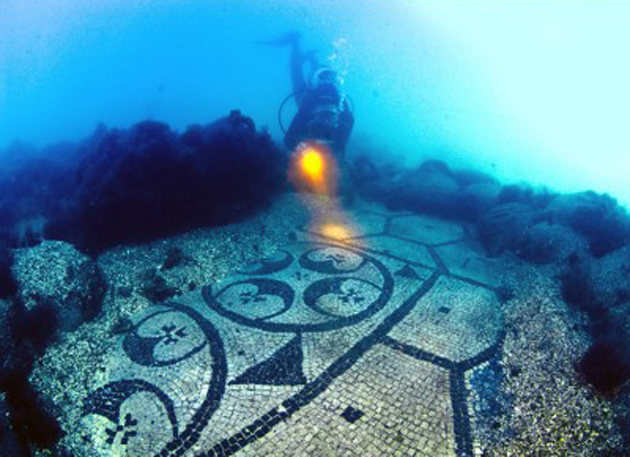![]() On the occasion of the 20th anniversary of the Convention on the Protection of the Underwater Cultural Heritage, UNESCO is launching the largest ever international cooperation programme involving eight countries on both shores of the Mediterranean for the safeguarding of the underwater cultural heritage of the Skerki Banks. This is an exceptional archaeological site located in the north-western part of the Strait of Sicily, which has been frequented since antiquity by ships travelling the trade route between Rome and Carthage.
On the occasion of the 20th anniversary of the Convention on the Protection of the Underwater Cultural Heritage, UNESCO is launching the largest ever international cooperation programme involving eight countries on both shores of the Mediterranean for the safeguarding of the underwater cultural heritage of the Skerki Banks. This is an exceptional archaeological site located in the north-western part of the Strait of Sicily, which has been frequented since antiquity by ships travelling the trade route between Rome and Carthage.
Underwater cultural heritage is the witness of millennia of our common memory. Hidden from view and protected beneath the surface of oceans, seas, lakes and rivers lies a priceless, largely unknown and underestimated heritage.
The famous Captain Jacques-Yves Cousteau said, “we love what we marvel at, and we protect what we love’’. Yet underwater heritage is threatened by looting and commercial exploitation, industrial trawling, coastal development, and exploitation of natural resources and the seabed. It is also vulnerable to global warming, acidification, and water pollution.
In order to better protect, understand and promote this unique and fragile heritage, UNESCO’s General Conference adopted the Convention on the Protection of the Underwater Cultural Heritage on 2 November 2001.
Now celebrating its 20th anniversary, the Convention has become the global legal framework for the protection of underwater cultural heritage. It provides legal and practical tools for States and underwater heritage professionals to identify and ensure the proper safeguarding, management and transmission of this heritage to future generations. Its Rules concerning Activities directed at Underwater Cultural Heritage establish common principles in the field of underwater archaeology, scientific excavations and site management.
Over the past twenty years, the Convention’s achievements include:
- The creation of a Scientific and Technical Advisory Body composed of 14 members, which undertakes field missions to support States in their efforts to protect their underwater cultural heritage. Bulgaria, Guatemala, Haiti, Madagascar, Panama and Paraguay have already benefited or are benefiting from its support. The missions take into account the expectations of communities living near underwater sites.
- The establishment of an extensive network of partners including a university twinning network with nearly 30 universities cooperating in the field of underwater archaeology, an international centre for training and research in underwater archaeology in Zadar, Croatia, as well as an extensive network of professional NGOs accredited to the Convention to support its implementation.
- The adoption of a Code of Ethics for diving at submerged archaeological sites to ensure responsible access to the sites by the general
- The publication of numerous resources that support training underwater cultural heritage professionals, including a Manual for Activities directed at Underwater Cultural Heritage and a Model Inventory Sheet for Underwater Cultural Heritage,and that raise awareness among the general public.
DISCOVER MORE ABOUT SAFEGUARDING THE SKERKI BANKS >>
Fonte. UNESCO.org

